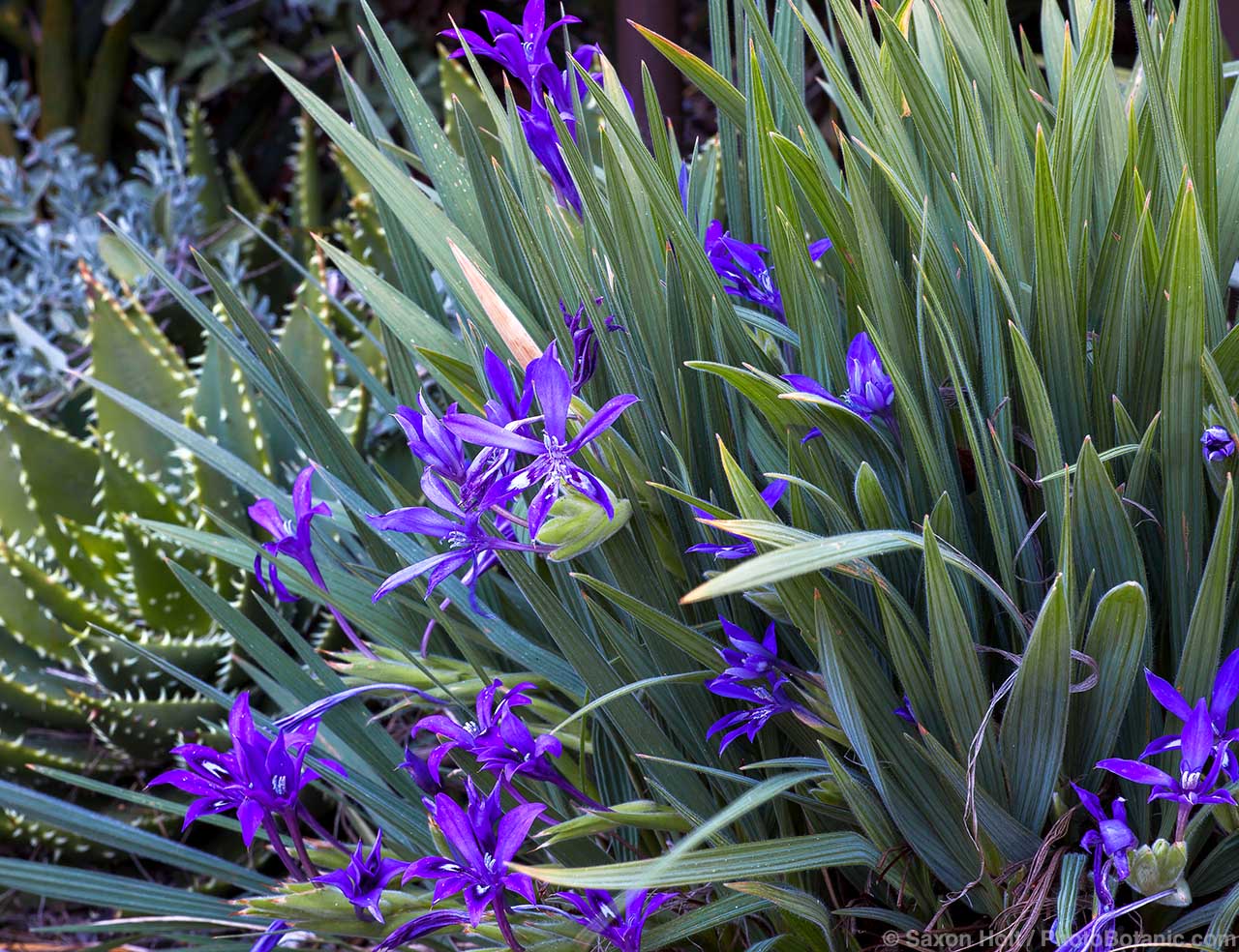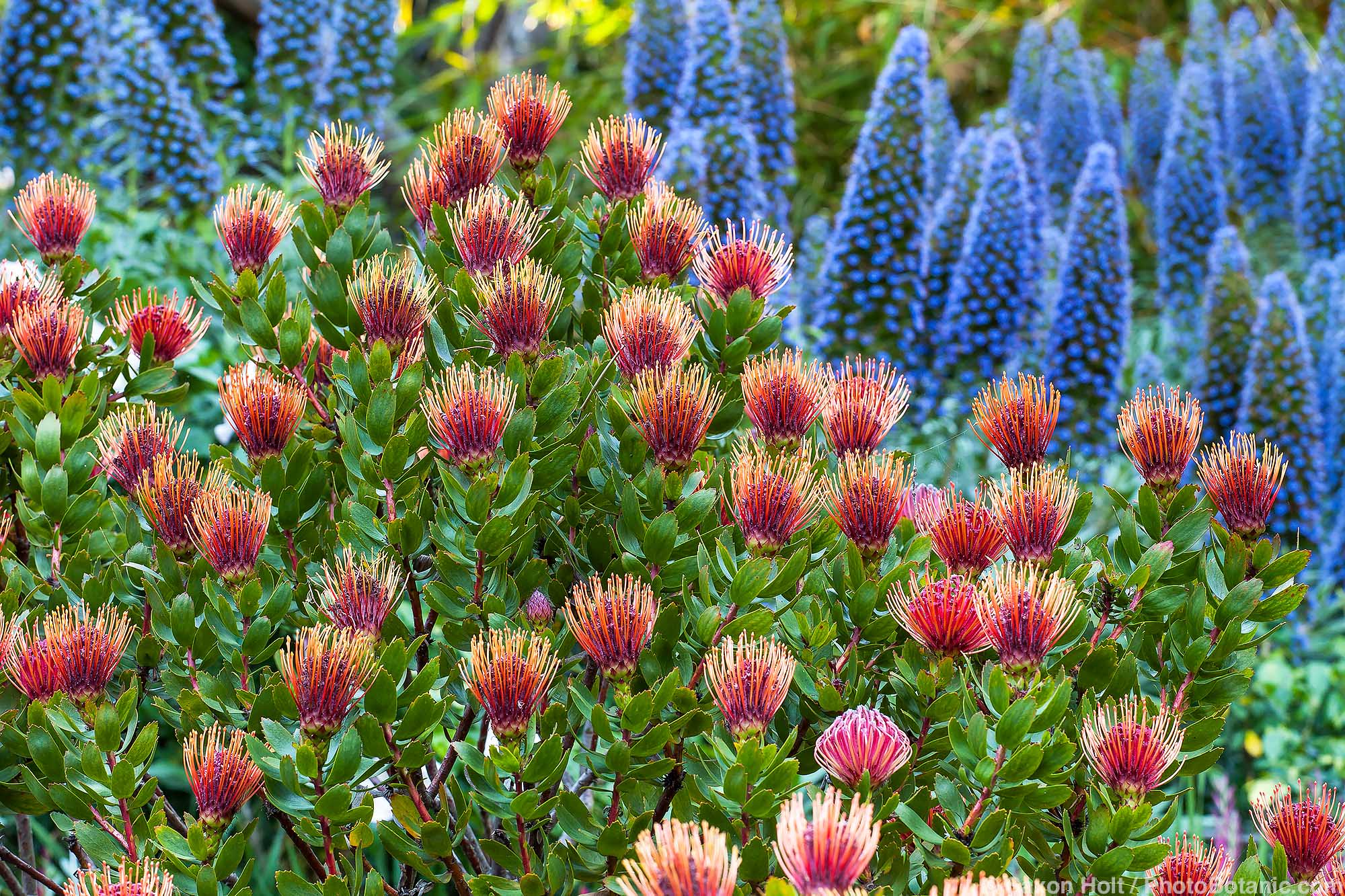Solidago
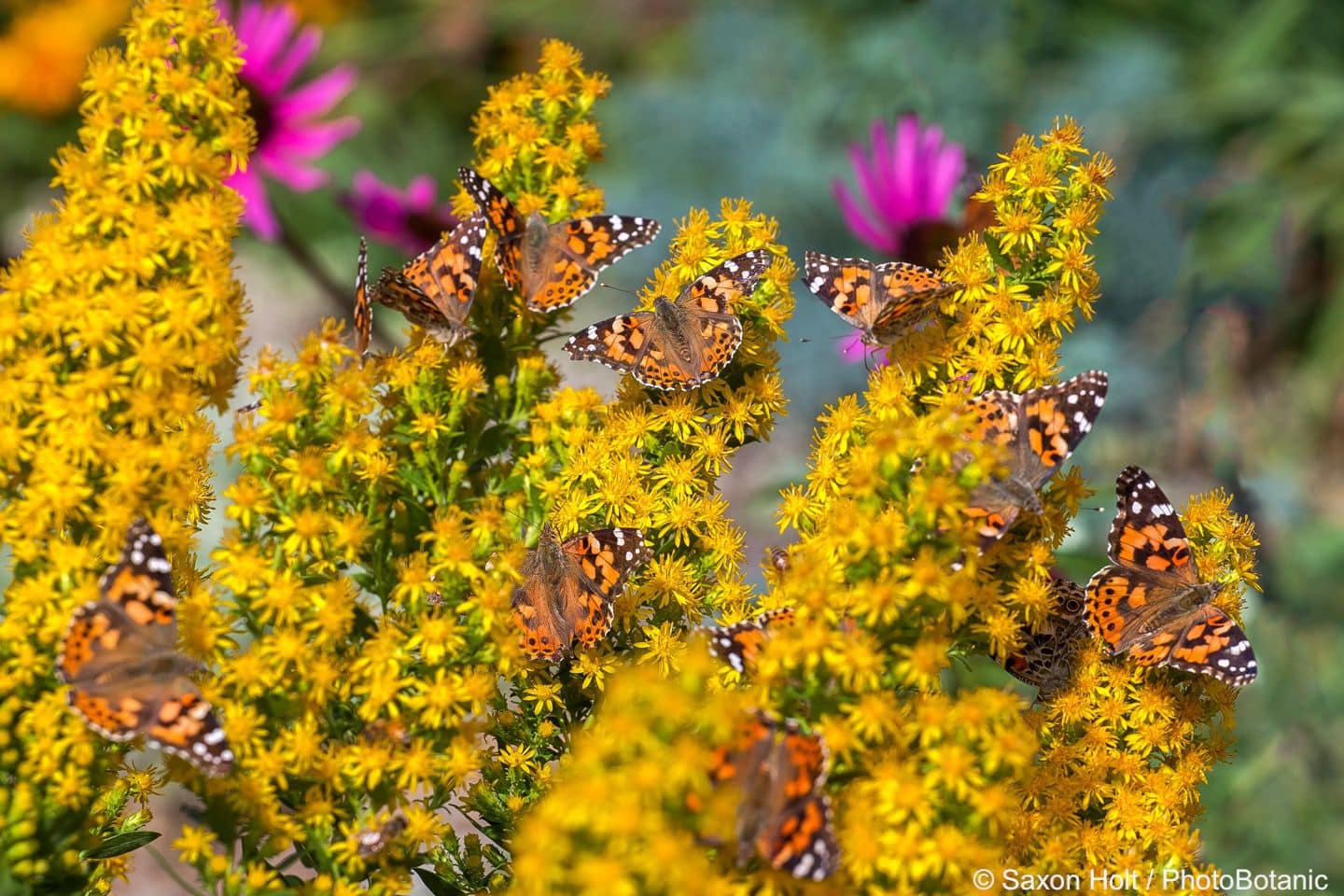
Share This!
If you’re looking for a perennial that feeds many butterflies, birds, and bees and serves as a host plant for many caterpillars, you can’t do much better than a native solidago. With one or more species native to every state in the United States and much of Canada, the genus is high on the list of “keystone” plants for every ecoregion in North America.
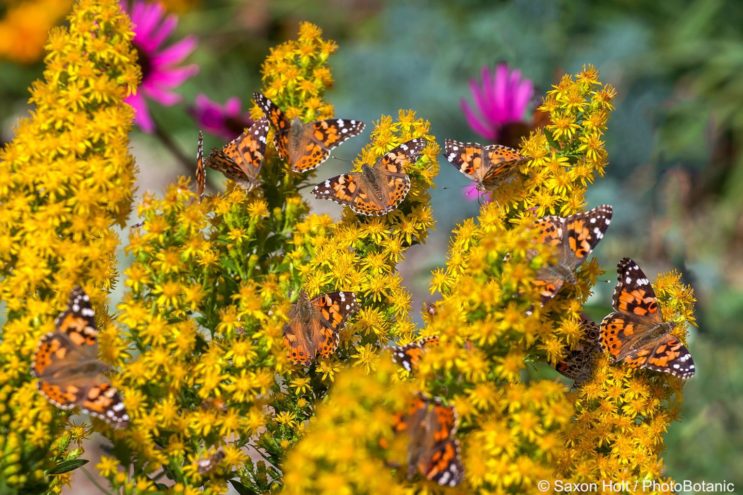
Painted lady (Vanessa cardui) butterflies on solidago
With the common name of goldenrod, solidagos could be confused with half a dozen other plants that share the name but do not have the same stellar benefits for wildlife. Solidago species native to North America’s various ecoregions are listed on the National Wildlife Federation website, along with the number of butterflies that lay eggs on each species and the number of pollen-specialist bees that rely on each plant for sustenance.
In the Mediterranean California ecoregion, which encompasses the Central Valley, Sierra foothills, and central Coast Ranges south to northern Mexico, Solidago elongata (S. canadensis var. elongata) and S. velutina support 53 species of butterflies and 27 species of bees.
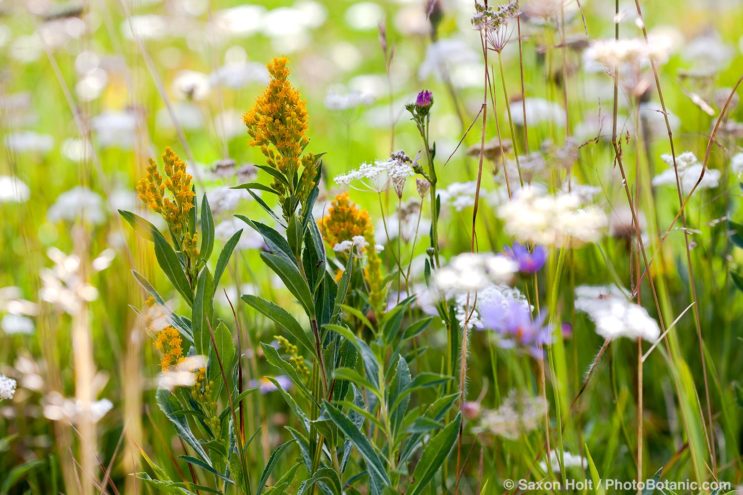
Solidago elongata flowering in a Sierra meadow
In the marine west coast forest ecoregion, which includes coastal northern California north through coastal Alaska, Solidago elongata and S. lepida support 49 butterflies and 92 bee species.
In the northwestern forested mountains ecoregion, inland from the coast, Solidago lepida and S. multiradiata support 52 butterflies and 48 bees. Similar numbers are found for Solidago species native to every other ecoregion in North America.
Solidagos are superficially similar in that they have matte green or grayish green, lance-shaped to oval, mostly basal leaves and showy clusters of small, bright yellow daisy flowers in late summer and fall.
Where the species most obviously differ is in height, ranging from two to five feet tall, and in the size and shape of the flower clusters. Some flower clusters are tall, upright, dense spikes, others are narrow and gracefully arching, and still others are held in radiating layers like the branches of a Christmas tree.
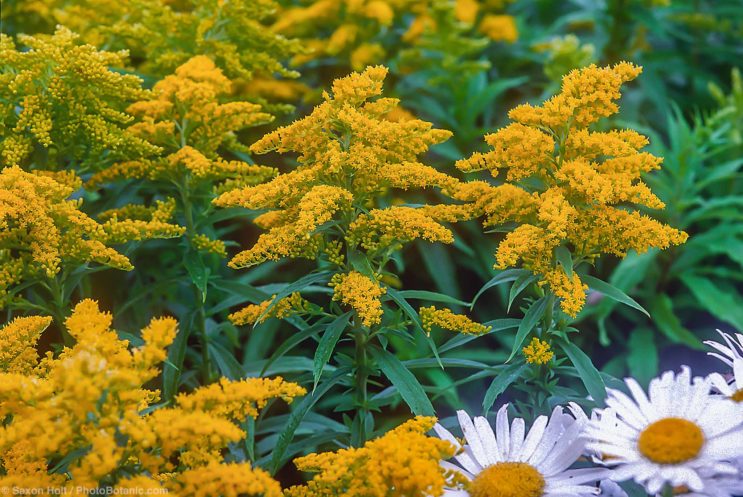
Solidago canadensis flowering in a California garden
Most solidagos spread by seed as well as by creeping rhizomes, so they should be planted in a wildish portion of the garden where they can be allowed to form large colonies. Most are also dormant or semi-dormant in winter and can be cut to the ground at that time.
Share This!
Related Articles
By: Nora Harlow
By: Nora Harlow
By: Nora Harlow




